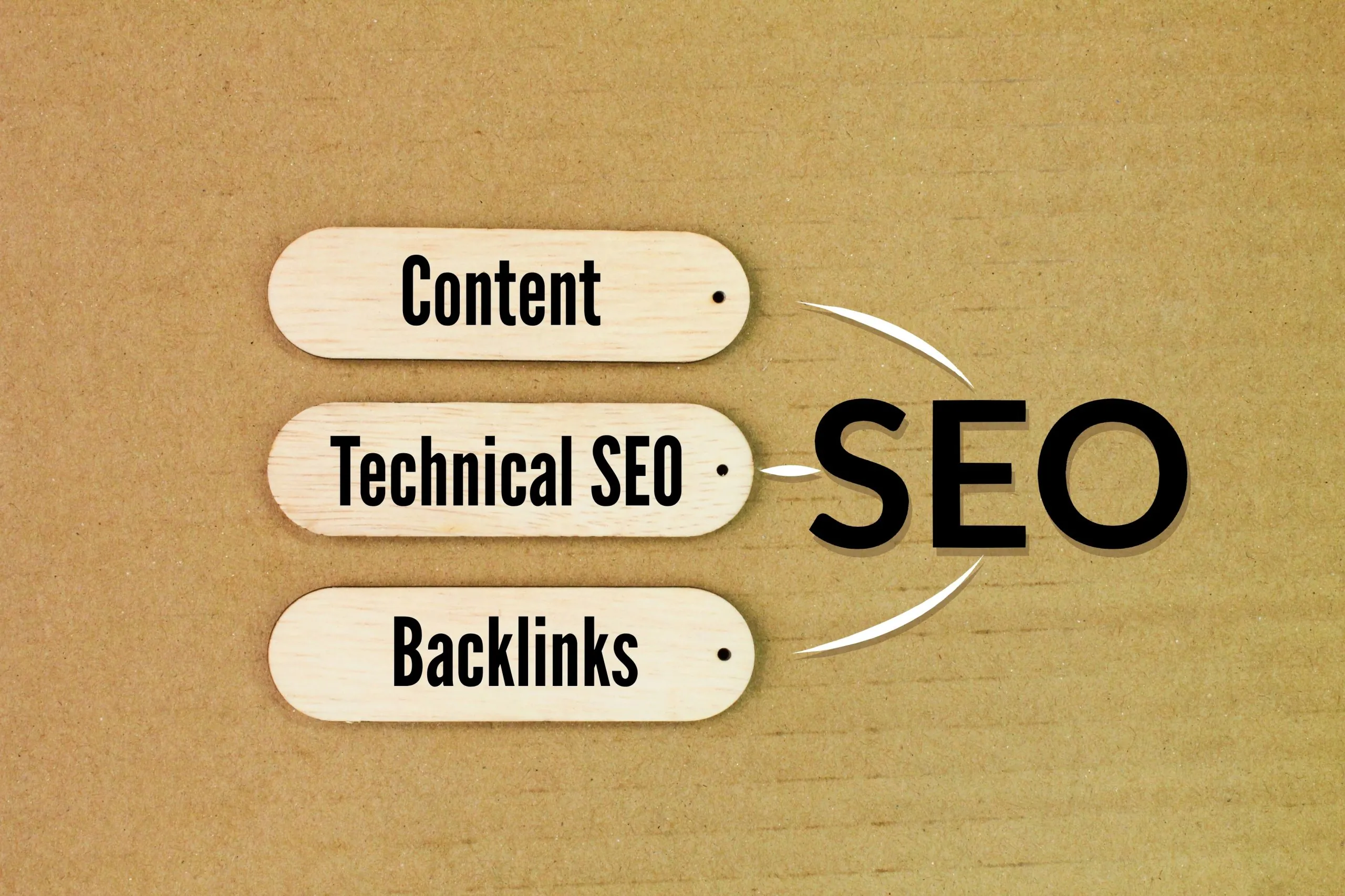
If your website doesn’t appear in search results, loads too slowly, or fails to meet your performance goals, consider running a technical SEO audit. This process helps ensure that everything on your site runs smoothly—from page speed to how Google crawls and indexes your content.
The good news? You don’t have to go through it alone. With expert help, you can uncover what’s going on and get a clear, actionable plan to fix it—without needing to decode confusing technical terms or troubleshoot independently.
What Is a Technical SEO Audit?
A technical SEO Audit is like a wellness check-up for your website. It looks at all the foundational elements that may help or hurt your site’s performance on Google. Every detail matters, from how fast it loads to how search engines crawl and index your content.
A technical SEO audit is critical to maintaining a healthy website and improving search engine rankings. It’s more than just a one-time fix; it’s an ongoing process that helps you address potential issues before they affect your site’s performance.
Importance of Conducting A Technical SEO Audit
-
Identifies Hidden Issues That Affect Rankings
A technical SEO audit uncovers underlying issues that can prevent search engines from properly crawling and indexing your site. Problems like broken links, incorrect redirects, or missing metadata might seem minor, but they can negatively impact your rankings. By identifying and fixing these issues early, you ensure that search engines can access and index your content effectively, improving your site’s visibility.
-
Improves Site Speed and Performance
Site speed is one of Google’s most important ranking factors. A slow website leads to poor user experience and high bounce rates, significantly hurting your rankings. A technical SEO audit includes a performance review highlighting slow-loading pages and providing actionable steps to improve speed, ensuring users and search engines can interact with your site without frustration.
-
Ensures Mobile Friendliness
With mobile devices dominating internet usage, Google strongly emphasizes mobile-friendly websites. A technical SEO audit checks your site’s performance on mobile devices and whether it’s fully responsive across different screen sizes. This is crucial for improving user experience and maintaining your rankings in mobile search results.
-
Enhances User Experience
Search engines like Google value websites that offer a great user experience. A site that’s easy to navigate, loads quickly, and has well-structured content will rank higher. A technical SEO audit helps improve these aspects by identifying issues such as poor internal linking, broken pages, or confusing navigation that could hinder users from interacting with your site.
-
Prevents Penalties and Loss of Rankings
Search engines regularly update their algorithms, and sites that don’t comply with best practices can get penalized. A technical SEO audit helps ensure that your website is in line with Google’s guidelines. This reduces the risk of penalties that could drop rankings and organic traffic, helping you maintain or improve your position in search results.
-
Optimizes Site for Better Crawling and Indexing
A well-optimized website is easier for search engines to crawl, which helps ensure that your pages are indexed correctly. During an audit, an expert checks your site’s structure, sitemap, robots.txt file, and internal linking. This optimization helps search engines find all of your important pages and index them accurately, which can positively impact your search engine rankings.
-
Supports Long-Term SEO Strategy
A technical SEO audit provides the foundation for a successful long-term SEO strategy. It highlights both immediate issues and areas for future improvement. With an audit, you’ll have a roadmap of ongoing improvements to ensure your site remains optimized as SEO trends and algorithms evolve.
-
Helps You Stay Competitive
The digital world evolves rapidly, with fresh competitors and frequent search engine updates constantly emerging. A technical SEO audit ensures your site stays competitive by aligning it with current SEO best practices. Regular audits also allow you to adapt quickly to new challenges and trends, giving you an edge over your competitors.
What Are The Key Components of A Technical SEO Audit
A technical SEO audit is a comprehensive analysis of your website to identify any issues affecting its performance in search engine results. It dives deep into the technical aspects that search engines consider when ranking websites. Here’s what’s typically included in a thorough technical SEO audit:
-
Site Crawl & Technical Health Check
The first step in a technical SEO audit is running a crawl of your site. This process simulates how search engines read and index your site. It helps identify problems like broken links, duplicate content, missing meta descriptions, or unoptimized images, which can hurt your site’s SEO performance.
-
Indexing & Sitemap Review
Your site’s indexing refers to the pages search engines can crawl and store in their databases. A good audit will ensure that all important pages are correctly indexed and accessible. This includes reviewing your sitemap and robots.txt files to ensure they’re correctly configured and that no valuable pages are accidentally blocked from being indexed.
-
Page Speed Analysis
Search engines consider page speed a key factor when ranking websites and a key part of the user experience. A technical SEO audit evaluates your site’s speed using tools like Google PageSpeed Insights. It identifies elements slowing down your site—such as large images, unoptimized JavaScript, or slow server responses—and recommends faster loading times.
-
Mobile Friendliness Check
With most internet users browsing on mobile devices, your site must perform well on all screen sizes. A mobile friendliness check ensures your website is responsive, easy to navigate, and loads quickly on smartphones and tablets. Google prioritizes mobile-first indexing, which could hurt your rankings if your mobile site isn’t optimized.
-
HTTPS & Security Review
Security is essential for both users and search engines. A technical SEO audit includes reviewing your site’s HTTPS (SSL certificate) to ensure security. Google ranks secure sites higher, and users trust websites that protect their data, so it’s crucial to fix any mixed content issues or SSL errors that might arise.
-
Content Structure & Internal Linking
A well-organized website makes it easier for search engines to crawl and users to navigate. The audit reviews your site’s content structure, ensuring pages are logically organized, and evaluates your internal linking strategy. Proper internal links help search engines understand the hierarchy of your pages and improve your site’s overall SEO.
-
Duplicate Content & Canonicalization
Duplicate content can mislead search engines and potentially hurt your rankings. The audit checks for any pages with duplicate content and helps implement canonical tags or consolidate pages to ensure that only your content’s original, most authoritative version is indexed. This helps prevent Google penalties for having multiple versions of duplicate content.
-
Schema Markup & Rich Snippets
Schema markup is a form of structured data that helps search engines understand your content better. It enhances your site’s rich snippets (like star ratings, pricing, or event details in search results). The audit checks whether you’re using schema correctly, especially for products, reviews, and FAQ sections, which can improve your visibility in search results.
-
Redirects & Broken Link Fixes
A well-maintained redirect system is essential for keeping users and search engines happy. The audit identifies any broken links (404 errors) or incorrect redirects (301 or 302 issues) and helps fix them. Proper redirects and link management preserve your SEO equity and ensure users don’t encounter dead ends on your site.
-
Analytics & Tracking Setup
An essential part of any SEO strategy is measuring the results of your efforts. A technical SEO audit ensures your Google Analytics or GA4 setup is correctly configured to track essential metrics, such as user behavior, conversions, and traffic sources. Accurate tracking allows you to make data-driven decisions and fine-tune your SEO strategy over time.

Benefits of Working With A Technical SEO Expert
Working with a technical SEO expert can provide a multitude of benefits that go beyond just fixing issues. Here’s why partnering with an expert is essential for your website’s long-term SEO success:
-
In-depth Knowledge and Expertise
A technical SEO expert brings years of experience and specialized knowledge. They know the ins and outs of search engine algorithms, website performance, and the latest SEO trends, allowing them to address issues that might not be obvious to a non-expert. Their expertise ensures your website is optimized for maximum visibility and performance.
-
Comprehensive Site Audits
Technical SEO experts don’t just perform basic checks—they conduct thorough audits that examine every aspect of your website’s health. They’ll analyze everything from site speed and mobile optimization to crawl errors and indexing issues. This thorough approach covers every detail to ensure nothing gets overlooked, which helps you avoid potential problems that could harm your rankings.
-
Time and Resource Efficiency
SEO can be time-consuming and complex, especially for businesses with little technical knowledge. A technical SEO expert saves you time by handling the complex aspects of SEO, allowing you to focus on running your business. Instead of spending countless hours learning and troubleshooting, you can rely on an expert who can get things right from the start.
-
Tailored Solutions for Your Business
An SEO expert customizes their approach to fit your business needs and goals. They don’t apply generic fixes—they analyze your site’s performance, identify unique challenges, and implement strategies that make sense for your industry. This personalized attention ensures that your SEO efforts align with your business objectives, driving the right traffic and improving conversions.
-
Stay Ahead of Competitors
In the fast-paced world of digital marketing, SEO is constantly evolving. A technical SEO expert stays updated with algorithm changes and industry best practices, helping your website stay competitive. They’ll proactively implement strategies that keep you ahead of the curve so you don’t fall behind your competitors in search rankings.
-
Long-Term SEO Success
Technical SEO isn’t just about fixing issues—it’s about laying a solid foundation for long-term success. By addressing technical problems early and setting up proper SEO practices, an expert ensures your site will continue performing well as search engines evolve. Their proactive approach helps you build sustainable growth over time.
-
Improved User Experience
Search engines like Google prioritize websites that offer great user experiences. A technical SEO expert helps ensure your site is fast, mobile-friendly, and easy to navigate, improving visitors’ experience. A well-optimized site keeps users happy, lowers bounce rates, and increases engagement, which can positively impact your SEO rankings.
-
Accurate Tracking and Analytics
An expert ensures that your tracking tools (like Google Analytics or GA4) are set up correctly so you can measure the effectiveness of your SEO campaigns. With accurate data, you’ll be able to see what’s working, adjust as needed, and measure the ROI of your efforts. This data-driven approach ensures your strategy is always on the right track.
Conclusion
Regularly conducting a technical SEO audit helps avoid emerging problems and supports long-term SEO success. Whether improving your website’s visibility, driving more organic traffic, or ensuring a smooth user experience, an audit provides the necessary insights and fixes to keep your site running at its best.
Anyone can run a quick audit tool, but can you interpret the results and know what needs to change? That’s where expert help makes all the difference. So, let us help you unlock your website’s potential.
With Us, You’ll Get:
- A personalized audit, not a generic checklist
- Expert insights from someone who speaks your language
- Clear priorities so you know what to fix first
- Hands-on help or direct implementation support
- A long-term SEO partner who’s committed in your business’ growth
Stop guessing, start optimizing, and gain clarity, confidence, and a clear path to better rankings. With Black Box Consulting, you’ll get more than just a report—real solutions, clear explanations, and support that fits your business goals!

